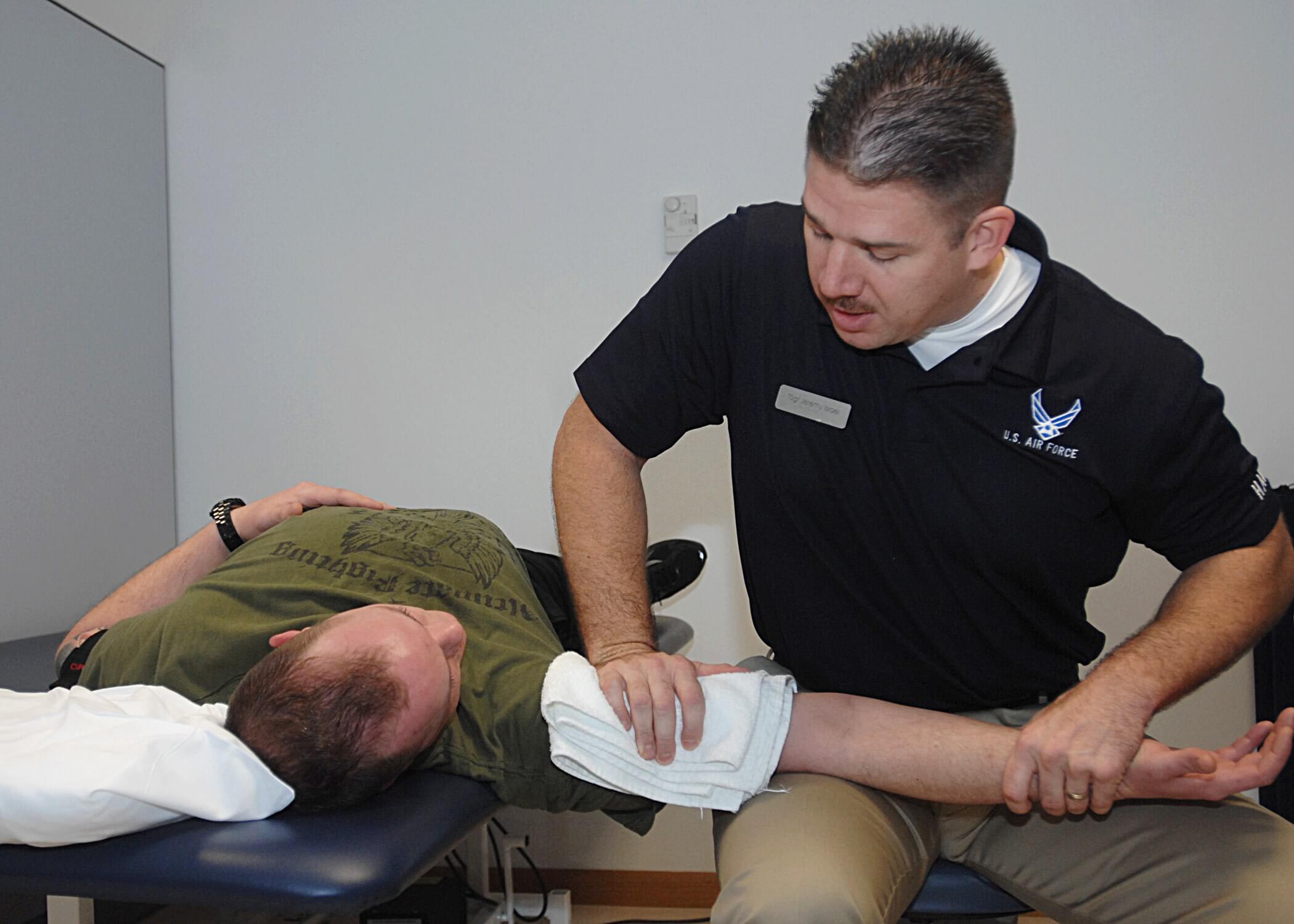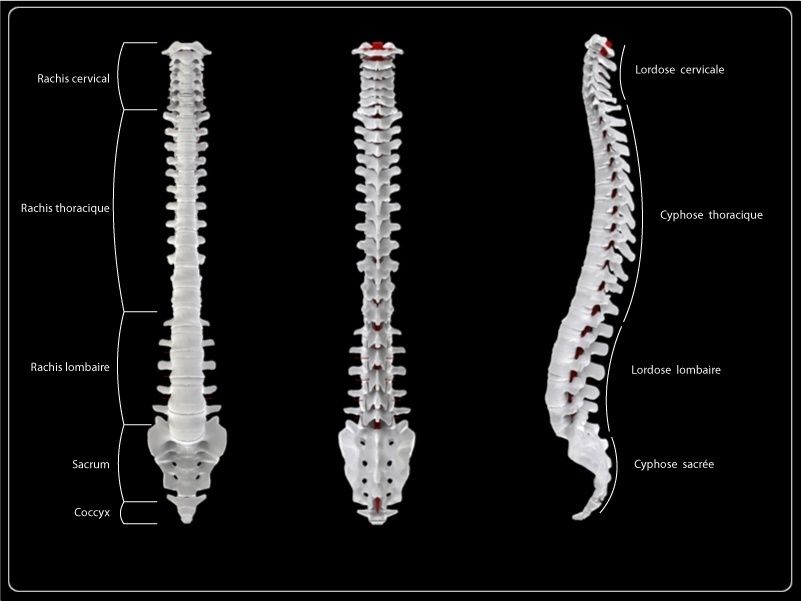
The Ultimate Guide To Chiropractic Care
Answering The Who, What, When, Why, and How of Chiropractic Care
10 Questions You Want to Know About the Chiropractor
Human beings are incredible, and every day we accomplish unbelievable goals. However, achieving success in these daily tasks can be taxing on the body.
Soreness will undoubtedly occur, but what if it will not go away?
What if you recently noticed a pain in a joint that had otherwise felt fine?
Perhaps you, or friends of yours, have had the itch to visit a Chiropractor. You may have heard a few personal testimonials or read a few articles yourself.
But how do you know if a Chiropractor is right for you?
In this Ultimate Guide on Chiropractic Care, we will go step by step through some of the most important questions we have received in our 40 years of treating patients.
2. What Are The Goals of Chiropractic Care?
3. When Should I Visit a Chiropractor?
4. What is an initial Visit Like?
5. What Conditions Do Chiropractors Commonly Treat?
6. What Methods Do Chiropractors Use For Treating?
7. Chiropractor or Physical Therapist?
8. What Are the Side Effects of Chiropractor Care?
9. What Are the Benefits of Chiropractic Care?
10. What Are Common Misconceptions About the Chiropractor?
What is a Chiropractor?
Before we get into the nitty-gritty details of chiropractic care, we must ask the simple question: What exactly is a Chiropractor?

Dating back to the late 1800s, Daniel David Palmer developed the term "Chiropractic" by combining the Greek words "
Daniel David Palmer continued to work on his chiropractic methods and established the Palmer School of Cure in 1897. This school still exists today and is titled the Palmer College of Chiropractic.
So where does that bring us today?
Flash forward about a hundred years and today chiropractic care is prevalent all over the world. While chiropractors are still most common in the United States, they are also popular in countries like Brazil, Italy, France, and Denmark.
Chiropractors are health care professions who use noninvasive methods like manual adjustment and spinal manipulation. With these treatment methods, chiropractors focus on neuromuscular disorders.
These hands-on, therapeutic approaches are intended to tackle the internal muscular and spinal issues and shift the body back into a healthy, pain-free condition.
Additional Resources:
What Are The Goals of Chiropractic Care?
Now that we have answered the important question of who, let's dive into why?
What exactly is it that a chiropractor wants to accomplish and have you take away from the appointment?
After dipping into their arsenal of techniques, Chiropractors focus on your joint function. From there the idea is to reduce any inflammation you have and neutralize the overall pain.
Chiropractors directly target your nervous system and spine to alleviate the following:
- Lower back pain
- Leg pain
- Neck pain
- Constant strains
- Arthritic pain
- Discomfort from contact injuries (sports/car accident)
- Headaches
Important note: Most chiropractors work closely with physicians and recommend you receive additional treatment should they decide your condition requires attention outside of their methods, this includes advanced diagnostic testing such as MRI's and NCV's.
At the end of the day, your chiropractor wants to realign and treat your body through physical manipulation and nonsurgical methods.
Additional Resources:
Chiropractor Fundamental Beliefs and Goals
Simple Chiropractic Care Information
When Should I Visit a Chiropractor?
You find yourself sitting at your desk for countless hours pumping out papers deadline after deadline. You lean back and stretch but notice the last couple of weeks there is that little soreness near the small of your back you just cannot seem to get rid of.
Or maybe you are up in the wee hours of the morning moving and lifting boxes from a shipment.
After a few weeks or months, there is a certain amount of discomfort in your knees from crouching down to lift the boxes.
Sometimes it is hard to fight the tendency to ignore consistent symptoms, but it is important to catch ailments before they have escalated too far.
Looking back at the desk example, sitting for too long can enable poor posture, which will increase unnecessary amounts of pressure on the neck, spine, and shoulders. 
Something as innocent as bad posture at your desk can lead to a serious physical condition such as a herniated disc, otherwise known as a pinched nerve.
For the box lifting scenario, it is likely the joint in your knee has inflammation that can lead to pain or a limited range of motion.
Even if you don't think your discomfort is concerning you should consider contacting a chiropractor for the following symptoms:
- Persistent headaches
- Chronic neck, back, or knee pain
- Involved in a personal injury
- Regularly play contact sports
- Often use medication for pain relief
Peace of mind goes a long way. Don't undervalue your comfort.
Additional Resources:
Ten Signs You Should See a Chiropractor
How to Improve Your Posture at Work
How Will I Know If I Need to See a Chiropractor?
What is an Initial Visit Like ?
Okay, at this point you have:
- Acknowledged a pain/discomfort
- Decided to take action and contact a Chiropractor
Good job!
It may seem silly to congratulate yourself at this part of the journey, but admitting something is not right and, more importantly, acting on it is vital and you should feel proud.
So you've gathered information and set up your appointment.
What should you expect now?
There are 3 main steps that compose your first Chiropractic visit:
- Patient symptoms and history
- The actual examination
- Your chiropractor's diagnosis
Patient Symptoms and History
This part of the chiropractic appointment will feel familiar.
This is the point of the visit where you divulge information to the chiropractor that led you to this point.
Information will range from your name and phone number to more specific, relevant questions such as where is your pain located and when you initially noticed the pain.
Important note: It is always important to remain as specific and honest as possible. Your chiropractor will work hard to find the best approach to an individual case, therefore relevant and truthful information eases the process along.
The collection of this information will be collected prior to your examination, most commonly in the form of a questionnaire.
The Chiropractic Examination
This stage of your visit begins your one on one time with the chiropractor.
Chiropractic examinations consist of more general tests and then more specific tests.
During the examination you can expect the following tests to be run:
- Blood pressure
- Pulse
- Reflexes
- Pulse OX
Next, the chiropractor will shift their attention to neurological and specific tests that focus on the part of your body you are experiencing problems.
In the specific tests you can expect:
- Posture analysis
- Range of motion
- Muscle strength
- Chiropractic manipulation of the sore area
Depending on the severity of the condition more time could be spent on the affected area.
Naturally, your chiropractor's examination will lead to...
The Chiropractic Diagnosis
By combining the information gathered from your history provided and examination, your chiropractor will make a diagnosis.
Important note: There are universal fundamentals of chiropractic care that spans across every chiropractor's personal practice, but like any other profession they have their own knacks and spin on certain elements. Ask questions. Your chiropractor will be eager to answer your questions and the more informed you are the better.
At this point, the chiropractor will reveal any abnormalities discovered during the examination.
If necessary, the chiropractor may suggest receiving an x-ray or undergoing an MRI. This will be based on the chiropractor's best discretion after finishing the examination.
Once the chiropractor has gathered enough sufficient information, they will decide if chiropractic care will be beneficial to your recovery and wellbeing.
If so, you and your chiropractor will begin specific and individualized treatment designed to relieve your pain.
Additional Resources:
What Happens
Lower Back Chiropractic Examination
What Conditions Do Chiropractors Commonly Treat?
Chiropractors may not be miracle workers, but they certainly are not limited to just a few uses.
There is a broad range of conditions chiropractors are capable of treating.
Chiropractors will categorize and take the length of symptoms into consideration. These symptoms will be placed on the following scale:
- Acute: When symptoms have been experienced 6 weeks or less
- Subacute: When symptoms have been observed 6 to 12 weeks
- Chronic: The symptoms have lasted consistently longer than 12 weeks
- Recurrent: The symptoms flare up inconsistently or due to a specific circumstance
Various conditions and injuries may rank in anywhere on the scale depending on the individual.
Here is a list of disorders that chiropractors typically assist and treat:
- Back sprains
Sprains occur when the ligaments stretch and tear.
- Back strains
Strains occur when the muscle or tendon bends improperly. This can be caused by playing a contact sport, for example.
- Herniated disc
Otherwise known as a slipped disc or pinched nerve, when the tough, outer layer of the disc tears the soft, inner jelly-like substance seeps out. The soft part of the disc can disrupt the nearby nerves leading to numbness or pain.

- Degenerative disc disorder (DDD)
As someone increases in age the discs that compose the spine weaken over time. This is due to repeated strain and overuse.
- Coccydynia
Coccydynia is a pain located in the spine's tailbone. This can develop from a hard fall or without a specific cause.
- Cervicogenic headache
Headaches stemmed from neck pain. These headaches are prevalent behind the eyes, temples, or back of the head.
- Sciatica
Leg pain that actually originates in the lower back. The sciatic nerve feels pressure and irritation and that pain travels down through the buttock into one or both legs.
- Spinal osteoarthritis
A condition that pairs with aging, spinal osteoarthritis is when the cartilage between jokes breaks down, thus causing pain as very little cushion separates the bones.
- Whiplash
A hyperextension or hyperflexion injury is common in vehicle accidents.
- Subluxation
A misalignment of the vertebrae that compose the spine.
- Tendonitis
Painful inflammation of a particular tendon as a result of over/misuse.
These are just a number of common injuries and diagnoses chiropractors are able to tackle.
Remember, even if your specific condition isn't on this list, ask your chiropractor for information.
Even if they can't personally solve your problem, they will point you in the right way.
Additional Resources:
Symptoms Caused by Subluxation of the Cervical Spine
Symptoms Caused by Subluxation of the Thoracic Spine
Symptoms Caused by Subluxation of the Lumbar Spine
What Methods Do Chiropractors Use For Treating?
We have looked at the who and what regarding chiropractic care.
Now it's time to dive into the how.
Here is a breakdown of 7 chiropractic methods and their uses:
Method 1: Spinal Manipulation/Chiropractic Adjustment
One of the most common methods used by a Chiropractor and probably the first one you associate when you think of a chiropractor. Think of the stretching and pushing followed by a nice, relieving "crack" sound.
The chiropractor is applying pressure and manipulation to specific vertebrae in your spine that may either be misaligned or fail to function normally.
Used for: General lower back pain and joint pain
Important note: The satisfying "cracking" sound, known as joint cavitation, does not always occur. This could be a result of the patient not fully being in a relaxed state or muscle splinting.
Method 2: Spinal Mobilization
Spinal mobilization is similar to spinal manipulation, however, the treatment tends to be gentler.
The slower movements are good for patients worried about muscle spasms or in severe pain during the acute stage of their condition.
Used for: Restoring joint function and alleviating pain.
Method 3: Cervical adjustment
This method revolves around massaging the neck. The chiropractor will massage the neck up, down, back, and forth and stretch your neck while you lay down known as cervical manual traction.
Various amounts and specific techniques will be adapted to your individual case.
Used for: General neck pain and headaches
Method 4: Traction

Traction is a treatment where the chiropractor will either manually or mechanically (with a wedge, for instance) apply pressure and force to the head, limbs, or back.
The amount of force depends on the affected area and even the patient's own weight can be used as extra traction, known as inversion therapy.
Traction is often used in sync with heating, vibration, and massage therapy.
Used for: General back pain, herniated disc pain relief, degenerative discs, posture correction, and joint pain
Method 5: Ultrasound therapy
Your chiropractor will expose only the area intended to be treated, rub a small amount of conduction gel on the area, and proceed to do the ultrasound.
The high-frequency waves micro massages joints and soft tissue.
Once completed, the chiropractor will massage and help stretch the joint.
Used for: Diminishing joint swelling and inflammation, relief arthritic stiffness, increase blood flow, and assist in breaking down excess scar tissue.
Method 6: Heat and ice therapy
In order to increase blood flow and facilitate relief, the chiropractor will switch between using ice packs for "10-15" minutes and a heating pad or heat wrap.
Similar, but not exactly the same as heat and ice therapy is Hydrotherapy. In this treatment, rather than using hot and cold packs, the patient emerges in water at various temperatures.
Used for: Blood flow, pain relief, swelling and general back pain
Method 7: Exercise/Dietary management
Your chiropractor may recommend a beneficial dietary restriction and exercise regiment intended to promote overall health and help strengthen the back.
Also, your chiropractor may suggest dietary supplements after a spinal adjustment has been performed.
Used for: Back strength, back pain reduction, and overall health
Additional Resources:
Improve Balance and Coordination with Chiropractic Care
Chiropractor or Physical Therapist?
From a distant perspective, a chiropractor and physical therapist may seem incredibly similar.
To a certain degree that is correct.
Similarities chiropractors and physical therapists share include:
- Noninvasive treatment of pain and injury
- Do not prescribe medication in MOST cases (Some states, such as New Mexico, have certain circumstances in which chiropractors may prescribe particular medication)
- Diagnose patients and formulate their own methods to take action
So where do chiropractors and physical therapists begin to differ?
Treatment Theory
Chiropractors focus on the health and well-being of the nervous system and musculoskeletal system. Pain relief from the neck, back, joints, and headaches is key.
This is achieved through the previously listed treatments such as spinal adjustments that need to be maintained with "10-30" minute visits.
Physical Therapists focus on the musculoskeletal system with the intention of maintaining and restoring maximum motion, function, and movement.
Physical therapists create rehabilitation programs for the individual to regain strength and balance commonly lost due to injury or aging.
Education
Chiropractors must earn a bachelor's degree after 3 to 4 years depending on the state, a Doctorate in Chiropractic from a chiropractic school which could take anywhere between 2 and 4 years, complete a one-year residency and
Total education expectancy is 6-8 years.
Physical Therapists must earn a bachelor's degree after 3 to 4 years and then earn a Doctorate of Physical Therapy which takes 3 years. During the 7 years, physical therapists must complete a 30-week internship and finally pass the National Physical Therapy Exam.
Total education expectancy is 7 years.
Clinical Methods and Focus
Chiropractors are able to treat different areas of the body, however, their main concentration is on the spine and misalignments through spinal manipulation.

Chiropractors use their extensive knowledge of the spine and musculoskeletal system to develop treatments centered around the spine, manipulation, and massages to address ailments.
Specialized areas include:
- Pediatrics
- Orthopedics
- Neurology
- General rehab
- Nutrition
- Internal disorders
Physical Therapists work with any part of the body and focus on joint structure and soft tissue.
Physical therapists include therapeutic massages, soft tissue techniques, sports performance, and include varying degrees of joint mobilization into their techniques.
Specialized areas include:
- Sports medicine
- Orthopedics
- Pediatrics
- Geriatrics
- Cardiovascular
- Neurology
It is important to know which healthcare professional is best for you based on their similarities and differences.
However, the goal of both Chiropractors and Physical Therapists is to restore your optimal wellbeing.
Additional Resources:
Description of Physical Therapy
Differences Between Chiropractor and Physical Therapist
What Are the Side Effects of Chiropractic Care?
There are setbacks in any aspect of life.
Of course, there are those moments where everything goes accordingly and succeeds as planned.
Naturally, this is your chiropractor's goal. However, occasionally there are bumps in the road.
Some side effects of chiropractic care include:
1. Initial Pain or Discomfort
When your chiropractor begins spinal adjustment, they are correcting a misalignment that is either beginning to or has already set in.
The pressure your chiropractor is forcing against your spine is met against excessive resistance from your body's misaligned state. That initial force and shift can cause discomfort after your visit and potentially even more pain.
Think of your body after taking a significant amount of time away from exercising. That initial push and exertion during your first workout will leave you sorer until it becomes a habit and allows your body time to adjust.
Trust the road to recovery.
Important note: If subsequent pain becomes too much don't be afraid to talk to your chiropractor directly about it. You can also apply an ice pack to the aching area.
2. Dizziness and/or Fatigue
It is significantly rare, but some patients claim to feel a little dizzy or exhausted after receiving some form of chiropractic treatment.
A UK study that you can read about here discussed that 6 per 10,000 patients recorded such symptoms up to 7 days after cervical spinal manipulation.
3. Toxic Release
If you experience mild cold or flu-like symptoms after visiting the chiropractor, that is considered Toxic Release.
As the name implies, a toxic release is your body reacting to spinal adjustments. As crazy as it may sound, this is actually a positive reaction and proves your treatment is working.
Important note: If you do not experience toxic release that does not mean your treatment time is being wasted. Patients are individuals and in turn, have individualistic reactions to their treatments.
Think of someone deciding to limit their sugar intake.
After a few days of not drinking soda or eating sweets, the body has to bear the burdens of headaches and mood swings to reach that ultimate goal of better health.
Additional Resources:
Why Does My Back Hurt After Seeing the Chiropractor?
What Are the Benefits of Chiropractic Care?
You are now aware of:
- Who Chiropractors are
- What conditions Chiropractors treat and assist
- How Chiropractors treat these conditions
Now that you're familiar with the process and techniques you may ask, "what kind of benefits can I expect to see from visiting the chiropractor?"

Here is a condensed list of the many, many benefits of receiving chiropractic care:
- Pain relief that treats the actual cause, not just a symptom
- Increase in your overall ability to move and function
- Additional mental clarity from treating headaches
- Treatment is surgery/drug-free, thus less of a hassle and less expensive
- Gaining knowledge on your ailment
- Learning tips and practices you can do yourself to keep discomfort at bay
- Healthy nutrition information and programs
- Consistent athletic performance.
Additional Resources:
Chiropractic Benefits For Seniors
Health Benefits of Chiropractic Care
What Are Common Misconceptions About the Chiropractor?
Learning and understanding correct information is just as important as the ability to sift through less than credible information.
Let's look at 3 common misconceptions regarding chiropractic treatment.
Misconception 1: "Chiropractic care isn't safe for pregnant women."
Many chiropractors are trained to work with pregnant women and will use extra caution to not use excessive pressure on the abdomen.
A misaligned pelvis is also a good reason to see a chiropractor especially if you are pregnant.
Misconception 2: "Be careful - chiropractic care is addictive!"
There are no more addictive qualities to chiropractic care than getting a "runner's high" or eating a healthy, home-cooked meal.
The idea is striving for a better quality of life.
Of course, there are those individuals with chronic disorders that regularly see the chiropractor. However, there are no withdrawal symptoms. It is merely seeking happiness and prolonged comfort.
Misconception 3: "There is no way Chiropractors can help with blood pressure or allergies."
Through spinal manipulation, the immune and respiratory system can connect and work together more fluidly which in turn helps your body fight against or eliminate allergies naturally.
And while there may be no exact chiropractic adjustment that directly lowers blood pressure, the ease of tension, stress, and discomfort from chiropractic care paired with nutritional programs and exercise lead to a healthier lifestyle and in turn lower overall blood pressure.
Additional Resources:
Chiropractic Care and Allergies
Chiropractic Care During Pregnancy
So Where Do We Go From Here?
You've gathered all the necessary information that you need.
If a particular pain or condition listed above resonates with you, take the time to click the link below and receive a free consultation with a qualified Chiropractor and take your first step toward pain relief.
Georgia's Most Trusted Chiropractic Care Doctors
Get A Free Chiropractic Consultation!


